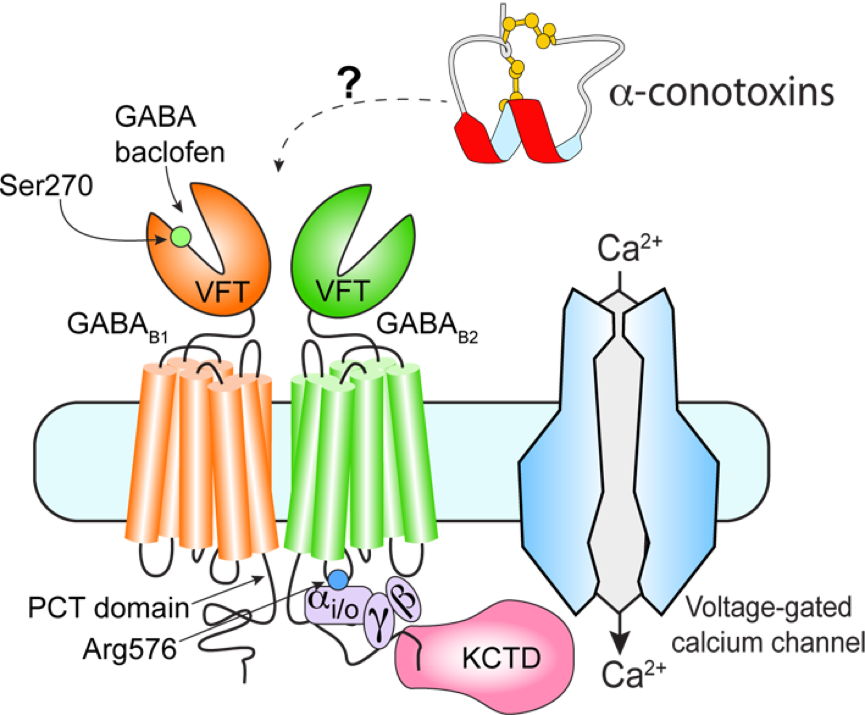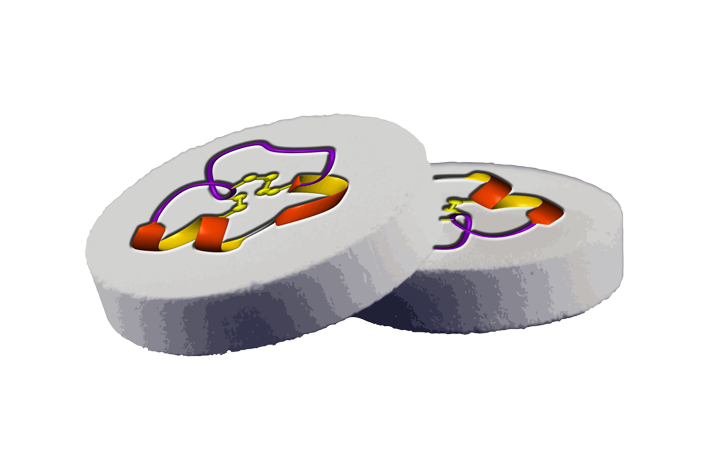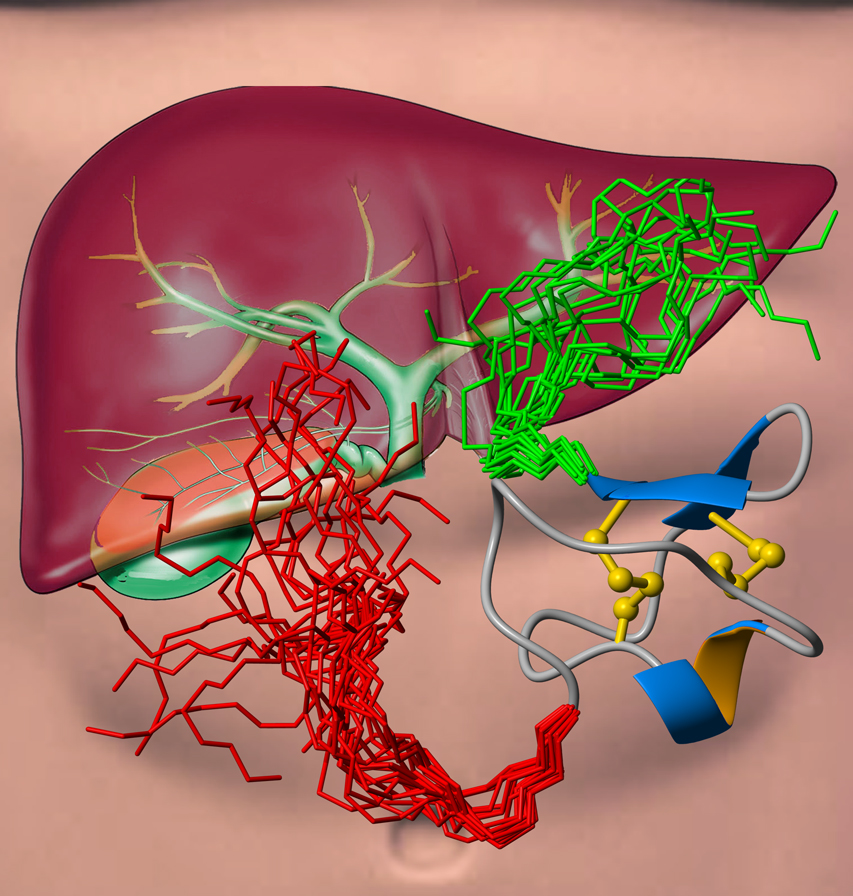We are interested in studying the role of naturally occurring bioactive peptides in a broad range of human diseases. Peptides have a diverse range of functions in human biology including acting as hormones, neuro-regulators and in the protection against pathogens. Our work in this area is focused on understanding the molecular mechanism that these peptide use to elicit a biological response with the hope of using this knowledge to develop new drug leads.
The study of endogenous human peptides and proteins and the isolation and characterisation of bioactive peptides from natural sources has generated huge interest in the development of these molecules for the treatment of a broad range of human diseases. Although there are many advantages of using peptides as therapeutics, there are still a number of hurdles that need to be overcome before this source of promising drug leads fulfill their vast potential. Our goal is to create potent and selective drug leads based on naturally occurring peptides for the treatment of human diseases and to develop novel strategies to provide these molecules with the ability to resist the body’s natural degradation pathways so they are able to reach their biological target.
For information on available PhD and Honours projects please contact Dr Richard Clark.
Carstens BB, Berecki G, Daniel JT, Lee HS, Jackson KAV, Tae H, Sadeghi M, Castro J, O’Donnell T, Deiteren A, Brierley SM, Craik DJ, Adams DJ, Clark RJ. Structure-Activity Studies of Cysteine-Rich a-Conotoxins that Inhibit High Voltage-Activated Calcium Channels via GABAB Receptor Activation Reveal a Minimal Functional Motif. Angew. Chem. Int. Ed. (2016) 55, 4692-4696.
Grishin AA*, Cuny H*, Hung A*, Clark RJ*, Brust A, Akondi K, Alewood PF, Craik DJ, Adams DJ, Identifying key amino acid residues that affect alpha-conotoxin AuIB inhibition of alpha3beta4 nicotinic acetylcholine receptors, J. Biol. Chem. (2013) 288, 34428-34442.
Clark RJ#, Tan C, Preza GC, Nemeth E, Ganz T, Craik DJ, Understanding the structure/activity relationships of the iron regulatory peptide hepcidin. Chem. Biol. (2011) 18, 336-343.
Clark RJ, Jensen J, Nevin ST, Callaghan BP, Adams DJ and Craik DJ, The engineering of an orally active conotoxin for the treatment of neuropathic pain. Angewandte Chemie (2010) 49, 6545-6548
Clark R J, Daly N L, Craik D J. Structural plasticity of the cyclic cystine knot framework: implications for biological activity and drug design. Biochemical J (2006) 394, 85-93
*Clark R J, Fischer H, Dempster L, Daly N L, Rosengren K J, Nevin S T, Daly N L, Meunier F A, Adams D J, Craik D J. Engineering stable peptide toxins by means of backbone cyclisation: stabilisation of the a-conotoxin MII. Proc. Nat. Acad. Sci. (2005) 102, 13767-13772.
Rosengren KJ, Clark RJ, Daly NL, Göransson U, Jones A, Craik DJ. Microcin J25 has a threaded sidechain-to-backbone. JACS (2003) 125, 12464-12474.
Find out more about our diverse range of research interests.







